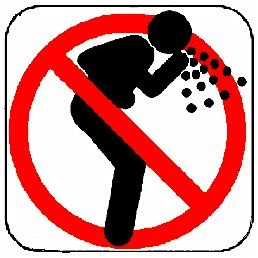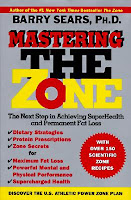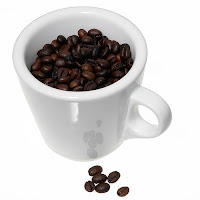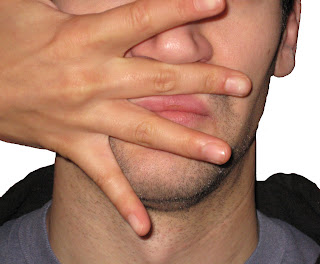Celebrating Solitide: 6 Benefits of Taking a Personal Retreat
8 Day-to-Day Habits to Improve Mental & Physical Health
 Everyone wants to be healthy and there are a wide variety of practices that one can undertake to contribute to good health. Many people, after feeling their health take a downward slide over a period of weeks, months, even years, say to themselves, “I’m going to make some big changes and get healthy again!” But all too often, they try to do too many things or tackle such huge goals that the lifestyle is too difficult to maintain.
Everyone wants to be healthy and there are a wide variety of practices that one can undertake to contribute to good health. Many people, after feeling their health take a downward slide over a period of weeks, months, even years, say to themselves, “I’m going to make some big changes and get healthy again!” But all too often, they try to do too many things or tackle such huge goals that the lifestyle is too difficult to maintain.
Odour Management for Martial Artists
Summer is approaching fast and with the hot weather usually comes an increase in dojo odour issues at even the best schools. It’s always difficult to bring up hygiene problems with students directly; no one likes to be told that sort of thing. It’s embarrassing! So hopefully this article will help martial arts students and instructors drop hints indirectly via Facebook, Twitter, etc. (more…)
4 Tips for Preventing Illness at the Dojo
 Right now there are a few cold/flu bugs doing the rounds in the Vancouver area. I managed to catch one myself, I suspect from someone I trained with at another dojo over a week ago. I don’t usually get sick and when I do pick something up, my body is usually pretty good at shaking it off quickly. Not this time. I had to take it easy for nearly 4 days. (more…)
Right now there are a few cold/flu bugs doing the rounds in the Vancouver area. I managed to catch one myself, I suspect from someone I trained with at another dojo over a week ago. I don’t usually get sick and when I do pick something up, my body is usually pretty good at shaking it off quickly. Not this time. I had to take it easy for nearly 4 days. (more…)
A Personal Review of the Zone Diet
 Leading up to an important martial arts grading, I decided to try eating healthier. A martial artist friend of mine recommended the “Zone Diet”, featured in the book Barry Sears’ book, Mastering the Zone
Leading up to an important martial arts grading, I decided to try eating healthier. A martial artist friend of mine recommended the “Zone Diet”, featured in the book Barry Sears’ book, Mastering the Zone. It’s not so much of a diet specifically for weight loss and more a way of eating on an ongoing basis that helps you achieve peak performance physically and mentally.
Sears’ concept of “The Zone” changes the way you look at nutrition, weight loss and performance. It stresses getting more of your calories from fat and protein and fewer from carbohydrates, but it’s not about getting rid of carbs altogether. It’s about eating the right amount of protein relative the the amount of carbs you’re eating to maintain the right levels of insulin production in your body. (more…)
Braving through a Belt Test with an Injury
My student and assistant instructor Chris Olson completed his Shodan exam this past Sunday. I am happy to announce that he passed. He earned his Shodan, but suffered a number of hardships during his grading in the way of injury. This made the grading more difficult, both from his point of view in having to try and perform without aggravating his injury, and for me in that I had to strike a balance between pushing him appropriately, but without creating scenarios that are sure to cause further damage.
Chris injured his foot quite badly during the 2-on-1 sparring portion in the first quarter of his grading. We’re still waiting for x-ray results, but he either got a very serious bruise or very minor fracture. We stopped the grading after he got hurt in order to ice it and assess whether or not the grading should continue. Chris wanted to keep going. He was able to walk on it, so we let him, asking that our doctor student, Jenny, keep an eye on him for the rest of the grading.
It was clear that the foot injury was affecting Chris’s performance, but we kept that under consideration in our evaluation of the test. While his ground grappling suffered greatly (Chris normally uses his legs a lot when he grapples) and his throws weren’t nearly as smooth (his injury prevented him from bending too low), he did some beautiful Jiu-jitsu circles, including a blindfolded circle. Because of the flexibility of choice in performing the circles, he was able to choose appropriate techniques that wouldn’t cause him as much pain.
While Chris’s Shodan grading wasn’t performed under the most ideal circumstances, it was a good for demonstrating both Jiu-jitsu skill/versatility and warrior spirit to fight on when the chips are down. We are all very proud.
There is a line though that you have to be careful not to cross when it comes to injuries during belt tests. If the person can’t put weight or pressure on the affected area, they shouldn’t continue the grading in my opinion. My golden rule is that if continuing with the grading is likely to worsen the injury in a serious way, the test should be ended. It can be a hard judgment call to make though. I was just glad to have a doctor on the mats to help make the call.
Does anyone out there have any experience with handling injuries during a belt test? Please share in the comments.
How Caffeine Can Enhance Your Physical Performance
 Jenny, my doctor student, sends me all sorts of interesting information about nutrition and medicine in relation to sports and exercise. She recently fed me a link discussing caffeine consumption and how it can improve physical performance.
Jenny, my doctor student, sends me all sorts of interesting information about nutrition and medicine in relation to sports and exercise. She recently fed me a link discussing caffeine consumption and how it can improve physical performance.
Don’t get too excited. This doesn’t mean that if you’re a caffeine junky who can’t get through a day without your coffee and/or coke that you’re more likely to perform well in competitions or during belt tests. It’s all about when it’s consumed and how much of it…. maybe.
There are a number of studies that suggest that if you consume caffeine (between 3-9mg per kilo of body weight) an hour before a physical event, you’re likely to experience performance-enhancing effects. To give you some perspective, a cup of drip coffee has 180mg, so if you’re 165lbs, you would need to have around 1.5-3.5 cups of coffee. Some of those studies also suggest that you’ll get the most benefits from caffeine if you’re usually a non-consumer.
Studies are not all entirely in agreement, however. There are several studies that have found no benefit for endurance athletes when using caffeine at the rates suggested above.
This post is not to suggest that I endorse consuming caffeine to enhance performance. If you’ve trained properly for a belt test, there is no reason why you shouldn’t do well. As for competitions, well, I guess it depends on what your motivations are for doing them. The Olympics seem to pooh-pooh caffeine consumption for this purpose. I just find the topic interesting because I’ve heard a lot of debate on the merits and demerits of caffeine.
How do you find caffeine affects your performance, if at all?
Taking Care of Joint & Muscle Strains
 Jiu-jitsu, or any martial art for that matter, is very physical. It’s not unusual for people to get minor joint strains or muscle pulls from time to time. Sometimes they last for a day or two. Sometimes they last longer, particularly when no action is taken to care for them.
Jiu-jitsu, or any martial art for that matter, is very physical. It’s not unusual for people to get minor joint strains or muscle pulls from time to time. Sometimes they last for a day or two. Sometimes they last longer, particularly when no action is taken to care for them.
People often ask me for suggestions for taking care of such injuries. So I’ll share here what I normally do. The most important thing to do is take care of the injury as soon as it occurs. People often tend to let it go and train through it when it’s something minor. This is a mistake because the onset of an injury sets the tone for your recovery.
As soon as the injury occurs, you should follow R.I.C.E. (Rest, Immobilization, Cold, Elevation). I also like to use anti-inflammatory agents to reduce pain and swelling. I use either ibuprofen (Advil) and a topical anti-inflammatory or both. The topical anti-inflammatory is a great trick of the trade. If it’s only a very minor strain, sometimes I’ll just smear some on the site of the injury then wait until after class to do cold therapy. If it’s a more serious injury, I apply it along with the cold therapy right at the onset of the injury.
There are a couple of options for topical inflammatory agents. The one I’ve used most is arnica gel. I always keep a tube of this stuff in my dojo first aid kit. Many of my students have tried it and found it to be effective. Some even bought their own to carry in their training bags. Another similar treatment is the Escents Aromatherapy Arthritis, Muscle & Joint Treatment gel. It has arnica in it as well as essential oils that are thought to help promote healing. I tried it a couple of times on minor joint strains and found it to be effective.
For ongoing injury care, don’t skimp on the cold therapy. I know it’s time consuming, but it’s very important for reducing your recovery time. You should apply cold to your injury regularly for the first 48 hours of your injury. Be sure to follow the rule of 15 minutes on, 15 minutes off so as not to irritate the surrounding tissues. That combined with anti-inflammatory agents (ingested or topical) will promote faster healing.
You should also go see a doctor to find out the extent of your injury and whether or not you should get ongoing care like physical therapy. After the first 48 hours, R.I.C.E. usually becomes M.I.C.E. (Movement, Immobilization, Compression, Elevation). “Movement” is often recommended to increase blood flow to the injury site to promote healing and to strengthen surrounding muscles to protect the joint. For example, my doctor recommended doing lots of cycling to help with my knee injury.
Of course, I need to point out that the contents of this blog post are not intended as medical advice. It’s just what I’ve had recommended to me and have found works well as a recovery strategy from experience. Every case is different, so you should always consult a doctor about your own specific injury.
Foam Rollers as an Alternative to Massage
Last weekend I took a short course on using foam rollers. Foam roller exercises offer many of the same benefits of massage therapy without the massive expense. It’s not all that uncommon for fitness centres to have foam rollers available to their clients. If they’re new to you, I’ll explain how they work.
How Foam Rollers Work
Foam rollers allow you to do myofascial release, a type of body work in which the practitioner applies gentle, sustained pressure on soft tissues while the superficial fascia is in traction.
The superficial fascia is a soft connective tissue just below your skin. It wraps and connects the bones, muscles, nerves and blood vessels of the body. Together, muscle and fascia are known as the myofascia system.
For various reasons including disuse, lack of stretching or injuries, the fascia and the underlying muscle tissue can become stuck together. This is called an adhesion, and it is known to restrict muscle movement. It also causes pain, soreness and reduced flexibility and range of motion.
Myofascial release softens and lengthes the fascia and breaking down scar tissue or adhesions between muscles, skin and bones. It has also been shown to relieve various muscle and joint pains such as IT band syndrome and shin splints. It also helps improve flexibility and range of motion.
Foam rollers are inexpensive (mine cost $34 Canadian taxes included) and with a bit of experimentation you can target just about any muscle group.
Foam Roller Exercises
The focal point of the seminar I attended was longitudinal immobilization, which is simply lying straight on the foam roller. The very act of lying on it, without doing any special movements, helps release tension along the spine and in the shoulders. It also helps improve posture and some research suggests that it helps increase total strength.
Here is a brief video showing how to do longitudinal immobilization:
In addition to lying on the foam roller, you can also tilt and shift your head to the sides for additional stretching for the shoulders. This really helps with a particular trigger point in my right shoulder that develops regularly on me from using a mouse. We also leaned the shoulders and hips off the foam roller to stretch the upper and lower back. I say “lean” but it’s more like spilling different parts of your body off the foam roller than gently drawing them back up again.
Our instructor also showed us a stretch for the IT band, the muscle area along the outside of the thigh. It can be quite painful, particularly if you use this muscle group a lot for things like kicking or running. But if it is painful, it means you probably really need this kind of stretch.
Here’s a video showing the IT band stretch using a foam roller:
This article really only scratches the surface of how these foam rollers can be used. If you have a particular part of your body you want to work on, chances are you can find a video on how to use a foam roller for it on YouTube. And here is a great article on fascia and myofascia release from Men’s Health Magazine.
Dealing with a Nose Bleed? Give it the Finger!
Nosebleeds are not uncommon in martial arts schools. They can occur randomly during exertion or from being punched in the nose. There have always been disputes as the best way to stop a nose bleed. Some say to pinch your nose at the bridge and hold your head forward. Some say to pinch and hold your head back. I say give it the finger.
The method I use has worked every time I’ve used it and seen it used. I first saw it demonstrated during a black belt seminar when Professor Georges Sylvain, the founder of Can-ryu Jiu-jitsu, used it to help a student who didn’t manage to keep his hands up high enough during a 2-on-1 sparring session. It looks crude and is mildly painful, but it works.
Here’s how it’s done. Support the back your patient (or victim’s) head with one hand. With the other hand, use your middle finger or the blade of your index finger to drive in and up into the infra-orbital nerve under the base of the nose at the top of upper lip (see photo below). Apply even pressure and hold the position for 30-40 seconds. The person receiving the treatment will likely experience mild discomfort (it is a pressure point). After the 30-40 seconds is up, gently ease off the pressure. The nosebleed should be gone. DO NOT use this method of the student is bleeding profusely and a broken nose is suspected.

I used this method just last night on a student who had a random nosebleed during class. He said it worked brilliantly at stopping the bleeding, plus his airway was clear since there was no clot blocking the passage. This is because it doesn’t work the same as the other methods that work on the basis of creating a clot. I think maybe the nerve stimulation causes blood flow to be directed away from the area. I don’t know for certain why it works, but it does. Every single time.
Give it a try, but do so at your own discretion and risk. I’m not a doctor, though doctors in my class have been impressed by its effectiveness.


 We're proud to announce that Lori O'Connell Sensei's new book, When the Fight Goes to the Ground: Jiu-jitsu Strategies & Tactics for Self-Defense, published through international martial arts publisher Tuttle Publishing, is now available in major book stores and online. More about it & where to buy it.
We're proud to announce that Lori O'Connell Sensei's new book, When the Fight Goes to the Ground: Jiu-jitsu Strategies & Tactics for Self-Defense, published through international martial arts publisher Tuttle Publishing, is now available in major book stores and online. More about it & where to buy it.